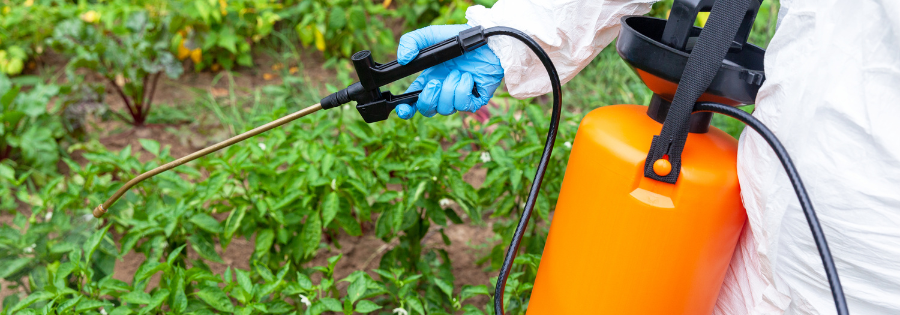Pre-Emergent vs. Post-Emergent Herbicide – What’s the Difference?

Pre-emergent or post-emergent: which one suits your weed control needs best? Each type serves a distinct purpose in the battle against unwanted vegetation. In this guide, we’ll explore the nuances of pre-emergent and post-emergent herbicides, helping you make informed decisions for effective weed control.
The Basics of Herbicides
Commercial herbicides are essential tools in maintaining tidy and weed-free landscapes. These chemical substances are designed to control or eliminate unwanted vegetation. Furthermore, herbicides can be categorized based on their target weeds and application methods.
Selective herbicides specifically target certain types of plants, leaving others unharmed, while non-selective herbicides are designed to control or eliminate a wide range of plant species.
Additionally, herbicides can be classified based on their application methods, including pre-emergent and post-emergent herbicides.
Pre-Emergent vs. Post-Emergent Herbicides: A Closer Look
The main difference between pre-emergent and post-emergent herbicides lies in their respective applications: pre-emergent herbicides are applied before weed seeds germinate, preventing their growth, while post-emergent herbicides target actively growing weeds, offering a solution for existing vegetation.
Pre-Emergent Herbicides
Pre-emergent herbicides operate preventively, acting as a proactive shield against weed growth. These herbicides create a barrier in the soil, hindering the germination of weed seeds and disrupting the early stages of plant development.
Application Timing
Apply pre-emergent herbicides in winter before plants start growing and in fall to stop weed seeds from sprouting.
Understanding the lifecycle of target weeds is crucial for effective application timing. Applying pre-emergent herbicides before the anticipated germination period ensures their optimal performance.
Effectiveness
The effectiveness of pre-emergent herbicides lies in their ability to create a protective zone in the soil, inhibiting weed establishment. However, it’s essential to note that pre-emergents have limitations, as they may not effectively control already established weeds or those that germinate after application. Careful consideration of application timing and weed species is necessary to maximize the landscaping benefits of pre-emergent herbicides in weed management strategies.
Post-Emergent Herbicides
Post-emergent herbicides come into play when weeds have already surfaced, providing targeted control for existing vegetation. These herbicides are designed to eliminate actively growing weeds, addressing the problem at its visible stage. One key aspect is understanding the specific weeds targeted by post-emergent herbicides. This allows for a more tailored and practical approach, addressing the unique characteristics of different weed species.
Application Timing
Apply post-emergent herbicides in spring and summer when weeds appear in your lawn.
Post-emergent herbicides are most effective when applied to actively growing weeds. Timing considerations may vary based on factors such as the weed species, growth stage, and environmental conditions.
Selectivity
While post-emergents offer targeted control, their selectivity can vary. Some are non-selective, affecting a broad range of plants, while others are selective, specifically targeting specific types of weeds. This selectivity allows for precision in weed management, minimizing impact on desirable vegetation.

Which Do You Choose: Pre-Emergent vs. Post-Emergent Herbicide?
Weed control involves more than just deciding between pre-emergent and post-emergent herbicides. It’s a nuanced process that considers various factors for effective and sustainable management. Beyond herbicide choices, understanding the specific needs of your commercial landscaping, identifying prevalent weed species, and implementing proper lawn maintenance practices are essential.
A comprehensive strategy may include integrating both pre-emergent and post-emergent herbicides, combining preventive and corrective measures.
Is Integrated Weed Management the Solution?
Using both pre-emergent and post-emergent herbicides creates a strong defense against weeds. Pre-emergents stop weed seeds from growing, preventing them from sprouting, while post-emergents target weeds that are already growing. This two-step approach covers preventing new weeds and getting rid of existing ones, providing a more comprehensive weed control strategy.
Additionally, integrating herbicide applications with proper lawn maintenance practices enhances the overall effectiveness of weed control. Regular mowing, adequate watering, and soil enrichment contribute to a healthier and more resilient lawn, making it less susceptible to weed invasions. This holistic approach not only tackles the immediate weed issues but also promotes the long-term health and vitality of the entire landscape.
The Bottom Line
In the ongoing battle against weeds, choosing between pre-emergent and post-emergent herbicides requires a nuanced understanding of their applications and limitations. By tailoring your approach based on specific needs, you can achieve a weed-free landscape that thrives throughout the seasons.
Transform Your Landscape with Coastal Spray’s Industrial Spray Programs!
Ready for top-notch industrial weed control? Coastal Spray offers customized spray programs designed to keep your landscape pristine. Our team prioritizes environmentally friendly methods to minimize impact while boosting the effectiveness of our chemical spray. We choose highly efficient vegetation control products that are safe for the environment and our workers.
Contact us today to explore our industrial vegetation management services.